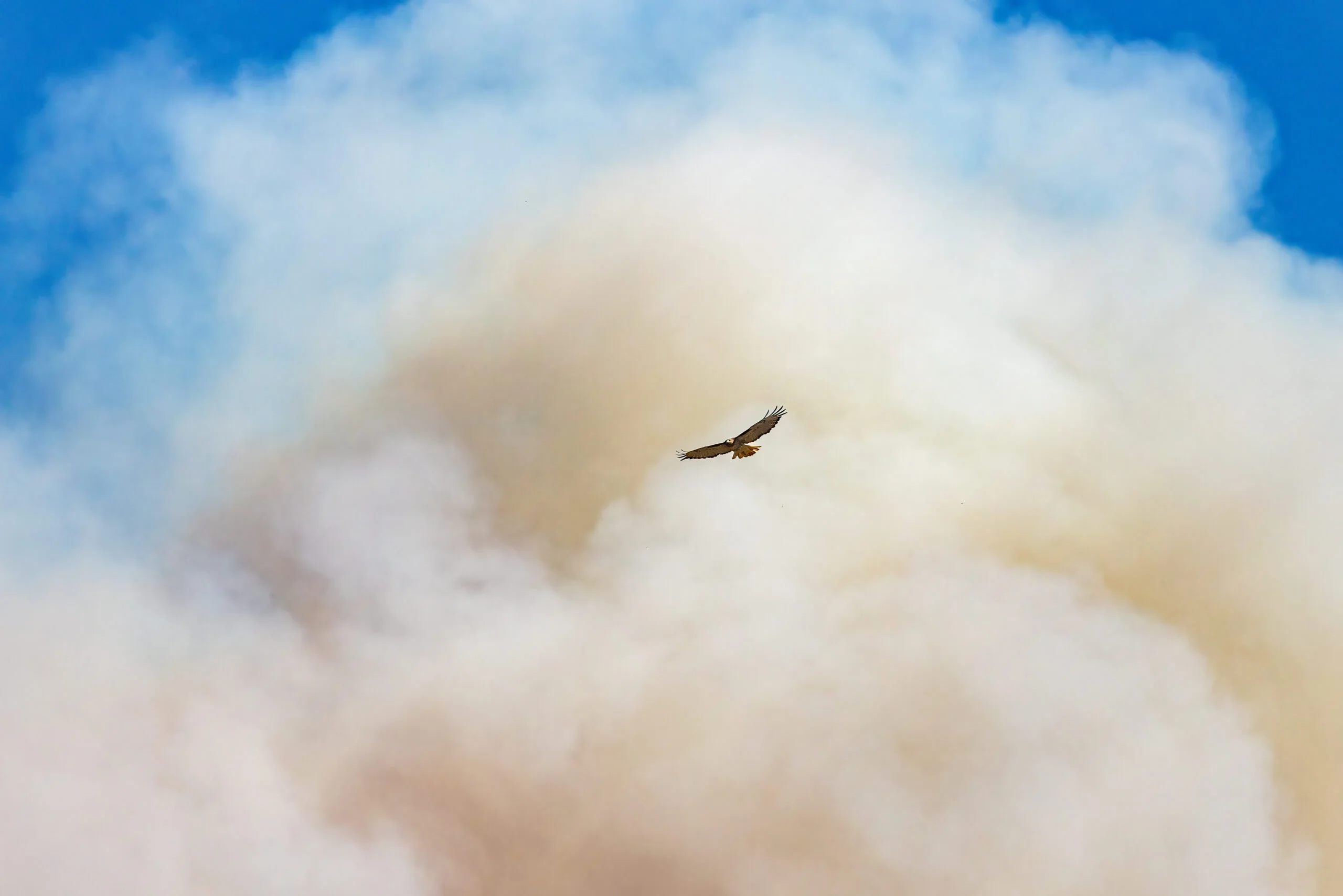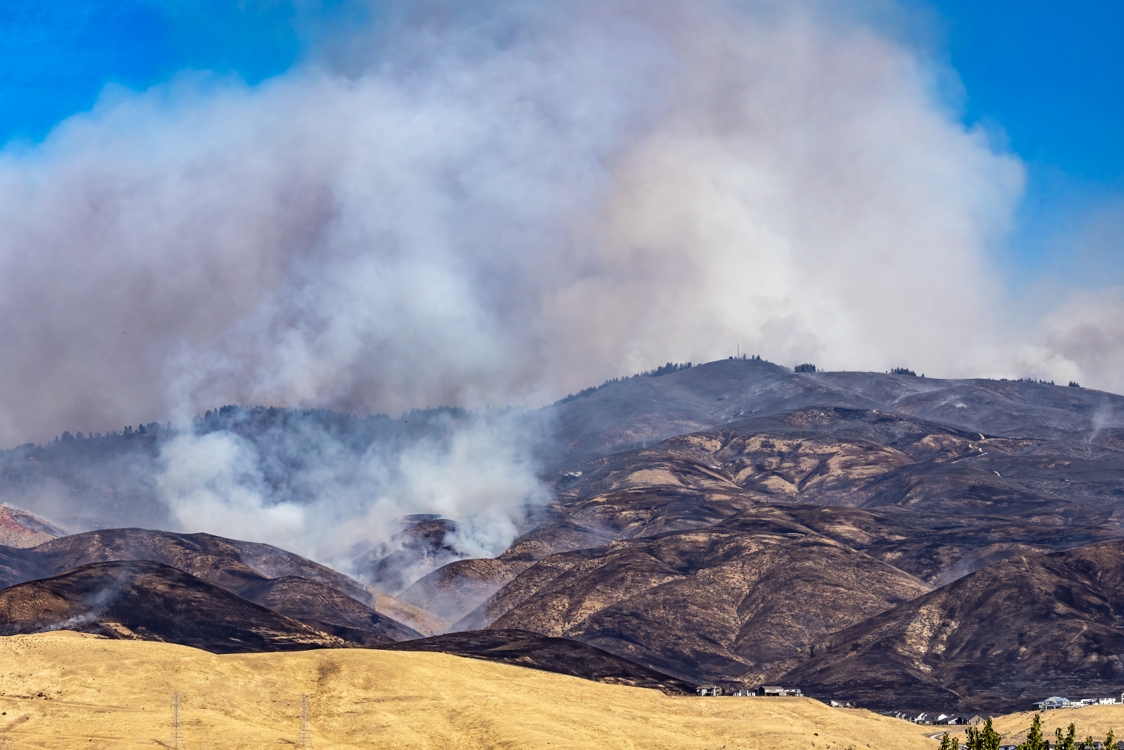
Wildfires have become more destructive and frequent, and most Idahoans can readily recall recent fires that have damaged their communities. This past summer was particularly intense, with high temperatures, heavy smoke and significant loss across the region.
When we think about wildfires and climate change, our minds often turn to the immediate consequences – thick smoke, public safety risks, shifting landscapes and the devastating toll on wildlife and people. However, an often overlooked consequence is the impact wildfires have on research.
In early October, the Valley Fire struck the Intermountain Bird Observatory, a vital hub of research for Idaho and Boise State University. The fire not only forced evacuations and caused extensive damage to the raptor banding site, but it also disrupted valuable scientific work being done to understand and protect our natural world.
Swift action saved lives and data
The Intermountain Bird Observatory, part of the College of Arts and Sciences, operates as both an academic research and community outreach program. Their mission is clear: combine research and education to further bird conservation, focusing on long-term monitoring of migratory birds while engaging with the community through outreach and student training.
For 30 years, Intermountain Bird Observatory has welcomed K-12 school groups for day and overnight trips to the Lucky Peak research station, a cornerstone of its outreach mission. The night of Oct. 3 began like many others for Intermountain Bird Observatory, as they hosted a local school group for an overnight trip. In the early hours of the morning, they awoke to an evacuation notice for an unfolding wildfire. Teachers and parents quickly rallied to evacuate the students, and with the help of a Bureau of Land Management escort, the group was safely guided down the mountain – all before the Intermountain Bird Observatory crews could even mobilize to leave.
Greg Kaltenecker, co-founder and the current Diane and Winston Moore Endowed Chair for the Director of the Intermountain Bird Observatory, praised the team. “Our team did a great job, not only getting those students off the mountain but getting themselves off the mountain and retrieving the data and the lure animals that we use for trapping raptors,” he said.
Unfortunately, the crew lost tents, sleeping bags and personal items. While some main infrastructure like the yurt and a couple of wall tents are still standing, they need to be evaluated for smoke damage. The owl camp station was only lightly burned, but the ridge station was intensely burned. The raptor trapping blind was completely destroyed, along with all the equipment inside.
The ripple effect of wildfires
This incident marks the second time wildfires have interrupted the observatory’s work at Lucky Peak in recent years. Kaltenecker noted, “We’ve seen over the last couple of decades significant changes from climate change. It’s gotten drier, it’s gotten hotter. We’ve seen changes in fire patterns and fire behavior as well.”
Since the observatory conducts long-term monitoring of migratory bird populations, tracking their migration each season, the current wildfire will disrupt this season’s data collection as access to the site will be limited moving forward. While this interruption is devastating, it presents a unique opportunity to gather data amidst significant habitat shifts caused by the fire. The importance of maintaining a long-term monitoring site cannot be overstated, especially as birds shift their migration dates due to climate change.
Kaltenecker noted that even before the fire, they had begun to see changes in vegetation that could influence bird migration patterns. The fire will bring about further shifts in the landscape, potentially benefiting migratory birds by fostering the growth of more deciduous vegetation at the site.

Wildfires pose cascading hazards
More and more people are being exposed to wildfires. Research has shown that across the western U.S. in the past 20 years, the number of people directly exposed to wildfires, not just smoke, has nearly tripled.
Mojtaba Sadegh, an associate professor in the Department of Civil Engineering, is researching the short and long-term consequences of wildfire on people and their well-being.
Sadegh explained: “It’s not necessarily that people are building in places that then burn later. These are places that historically did not have frequent fires, but now, with warming, have more frequent fires, and some of those frequent fires encroach upon existing human communities.”
With exposure, people, wildlife and our environments experience cascading hazards. Cascading hazards are interconnected events where an initial disaster, like a wildfire, triggers secondary hazards such as floods, erosion and water contamination, amplifying the overall and significant impact on communities and ecosystems.
The ongoing chain of effects highlights the long-term and interconnected risks that wildfires pose to human life and our environment.
When asked what our campus community should know about wildfire, Sadegh shared that “a lot of these fires are human started. Be careful when you’re recreating outside, it’s a matter of an accident that a fire can start. Make sure that you are not the reason that starts the next fire.”
Looking ahead
With access to the Lucky Peak site still restricted due to ongoing fire activity, the Intermountain Bird Observatory does not expect Highland Valley Road or the research station to reopen anytime soon, effectively marking the end of the fall 2024 research season. Despite these challenges, Kaltenecker emphasized the most important takeaway: “Stuff is stuff, you know. People are what’s most important, and everybody was able to get off the mountain safely.”
As fire risks rise, Intermountain Bird Observatory is also revamping its fire safety protocols and rethinking how it will host public and school groups in the future. While the road ahead may be uncertain, Kaltenecker remains focused on the mission.
The Diane Moore Nature Center, along the Boise River, is another research site for bird banding, habitat restoration, and community engagement. The Intermountain Bird Observatory invites the community to participate at the Diane Moore Nature Center, where they regularly hold bird banding and habitat restoration events throughout the year.
The Intermountain Bird Observatory station isn’t the only focus for recovery efforts. The mountainside around Lucky Peak hosts diverse wildlife that supports birds in the region, and the Valley Fire has burned away significant swathes of plant life there.
“When you focus on restoring natural vegetation, that’s going to bolster the wildlife populations as well,” said Megan Cattau, an assistant professor on the School of the Environment’s Human-Environment Systems team who works with the City of Boise to study post-fire reseeding efforts.
Cattau noted that the Boise foothills are especially vulnerable to fast-burning wildfires because of invasive cheatgrass. Repopulating the area with native sagebrush and bitterbrush can help to secure research infrastructure and homes against future fires.
“Wildfire is going to become an increasing threat across the western U.S. and in our local community in Boise,” she said. “Especially as the climate changes, invasive species spread and we have more human ignitions across the landscape. It’s just a risk and a threat we all need to take into consideration, not only as we plan research projects, but as we navigate how to live and work on this landscape.”
Last week’s events serve as a stark reminder that wildfires don’t just reshape our landscapes – they threaten the progress of scientific research vital to understanding our world and mitigating the very forces that threaten to destroy it.